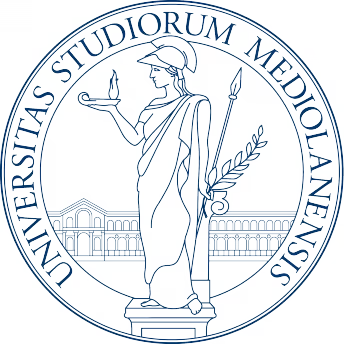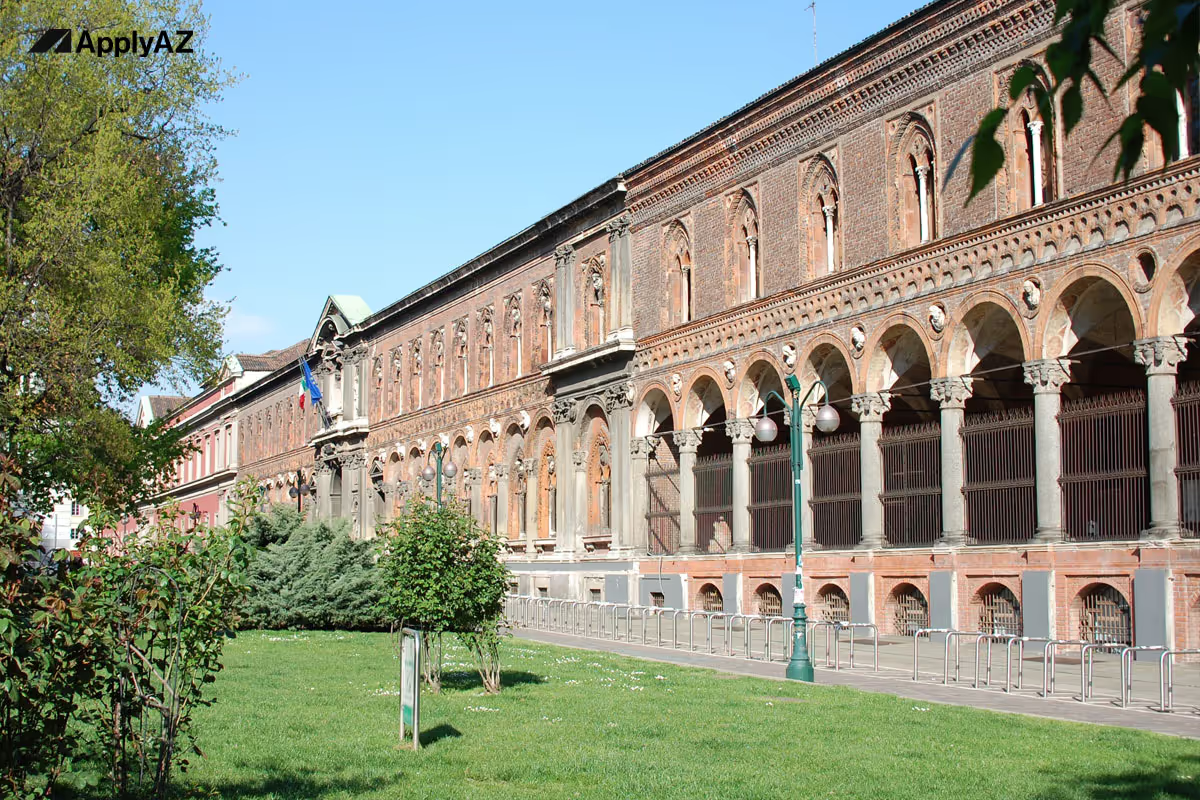Heading
Heading








University of Milan
English‑taught programs in Italy: breadth and quality
Founded in 1924, the University of Milan is a flagship among public Italian universities. It offers more than 15 full degrees entirely in English across life sciences, data science, economics, law, and the humanities. Small‑group seminars, modern laboratories, and research‑led teaching earn the university a consistent place in global top‑200 rankings for medicine, biology, and physics. Academic life blends lectures with project work and Erasmus+ exchanges, giving you both depth and international exposure.
Life in Milan: culture, costs, connections
Milan pairs Renaissance architecture with Europe’s fastest‑growing innovation district. Four metro lines, trams, and regional trains keep average commutes under 35 minutes, while student passes cut transport costs by half. Cafés stay open late for study sessions; world‑class music, design fairs, and football derbies fill weekends. Rents start around €400 per month in shared flats—pricey for Italy, but offset by campus dining at €4 per meal and the chance to share expenses with classmates.
Funding advantages: DSU grant and other support
As a state institution, Milan charges income‑linked tuition that ranges from €156 to roughly €3 000 per year. International students can apply for the DSU grant, which may waive tuition entirely and add a €7 000 living allowance, residence‑hall place, and meal vouchers. Merit scholarships reward top GPAs, and research assistant roles provide paid experience. With these tools, many graduates finish their master’s with little or no debt, mirroring the affordability of tuition‑free universities Italy promotes.
Career gateways in a global city
Milan is home to Italy’s stock exchange and to headquarters of companies such as IBM, Luxottica, and Nestlé. University partnerships cover more than 4 000 firms, feeding internships in finance, biotech, fashion tech, and AI start‑ups. Career Services run résumé labs, mock interviews, and on‑campus job fairs; 87 % of international graduates secure work or PhD places within seven months. Language tandems, alumni mentoring, and professional certification courses (Prince2, CFA Level I, Lean Six Sigma) further boost employability.
Five key takeaways
- Wide portfolio of English degrees backed by strong research.
- Dynamic metropolitan lifestyle with rich art and sport.
- Income‑based fees plus DSU grant make study highly affordable.
- Direct pipelines to internships and high‑growth careers.
- Supportive campus: libraries until midnight, 100+ clubs, free fitness classes.
In two minutes we’ll confirm whether you meet the basic entry rules for tuition‑free, English‑taught degrees in Italy. We’ll then quickly see if we still have space for you this month. If so, you’ll get a personalised offer. Accept it, and our experts hand‑craft a shortlist of majors that fit your grades, goals, and career plans. Upload your documents once; we submit every university and scholarship application, line up multiple admission letters, and guide you through the visa process—backed by our admission‑and‑scholarship guarantee.
MSc Biomedical Omics at University of Milan
1. Why Biomedical Omics and why now?
Personalised medicine is moving from promise to clinical routine. Driving this shift are “omics” sciences—genomics, transcriptomics, proteomics, metabolomics, and epigenomics—that decode human biology at unprecedented resolution. The MSc Biomedical Omics at the University of Milan sits among the most forward‑looking English‑taught programs in Italy, equipping graduates to design experiments, analyse big data, and translate findings into diagnostics and therapies. As one of the oldest public Italian universities, Milan combines leading research infrastructure with fee regulations that rival the affordability of tuition‑free universities Italy and generous DSU grant support.
2. Program architecture: from molecules to medicine
2.1 First‑year foundations
The journey begins with core modules in Molecular Biology for Omics, Next‑Generation Sequencing, and Biostatistics. You learn to extract, quality‑control, and sequence DNA and RNA from both human and microbial samples. Practical sessions use Illumina and Oxford Nanopore platforms, while bioinformatics labs introduce R, Python, and Galaxy workflows. By semester’s end you assemble a de‑novo genome and identify variants linked to disease.
2.2 Systems‑level insights
Semester two adds Proteomics and Metabolomics, Epigenetics, and Single‑Cell Technologies. Mass‑spectrometry workshops teach you to profile protein abundance across thousands of samples; metabolite fingerprinting reveals disease biomarkers; Hi‑C and ATAC‑seq sessions expose chromatin dynamics. A cross‑cutting course in Network Biology helps you integrate multi‑omics datasets into actionable biological pathways.
2.3 Translational blocks
Year two flips the spotlight onto clinics and industry. Clinical Genomics examines tumour boards, pharmacogenomics, and rare‑disease diagnostics. Regulatory Affairs for Omics unpacks ISO standards, CE‑IVD certification, and EU data‑protection rules. In Entrepreneurship in Life Sciences you sketch a start‑up plan that leverages omics for preventative health.
2.4 Capstone thesis
You spend ten months embedded in a university lab, hospital unit, or biotech partner. Recent projects include:
- CRISPR screens to uncover drug‑resistant cancer mutations.
- Microbiome signatures predicting response to immunotherapy.
- AI pipelines that flag sepsis risk from metabolomics profiles.
Many students publish in journals such as Nature Communications before graduation.
3. Learning modes and resources
- Wet‑lab immersion: 600 m² of core facilities housing sequencers, MALDI‑TOF, and flow‑cytometry suites.
- Super‑computer access: The Leonardo cluster lets you run population‑scale GWAS in hours.
- International modules: Erasmus+ agreements with KU Leuven, Karolinska Institute, and UCL provide short exchanges in cancer omics and clinical bioinformatics.
- Soft‑skill clinics: Workshops on grant writing, science communication, and project leadership sharpen your career edge.
4. Graduate outcomes: where can this degree take you?
- Clinical bioinformatician in hospital molecular pathology labs.
- Research scientist in pharma or biotech (oncology, rare diseases, vaccines).
- Data‑science specialist for population genomics projects or health‑tech start‑ups.
- Regulatory affairs officer guiding new diagnostic devices through EU approval.
- PhD candidate at leading institutes—over 60 % of alumni enter doctoral programs within a year.
Companies recruiting recent graduates include Roche, Illumina, Thermo Fisher Scientific, and cutting‑edge Milanese start‑ups backed by venture capital.
5. Fees, scholarships, and DSU grant advantages
Tuition at the University of Milan scales with family income, starting at €156 a year. International students often reduce or eliminate fees with the DSU grant—a scheme that can cover tuition, accommodation, meals, and pay up to €7 000 annually. Merit scholarships (worth €5 000) reward high GPAs, and paid research assistantships (≈€800 per month) further ease living costs. Combined, these opportunities bring net expenses close to those of public Italian universities that charge only a symbolic fee.
6. Admissions essentials and ApplyAZ guidance
Academic background: bachelor’s degree in biology, biotechnology, biochemistry, biomedical engineering, or related field with at least 24 ECTS in molecular subjects.
English requirement: IELTS 6.5 / TOEFL 90 or proof of prior English‑medium study.
Selection steps:
- Online application with CV, transcript, passport, motivation letter, and two references.
- Technical interview—expect questions on PCR, sequencing platforms, and data analysis strategies.
- Notification within 30 days; scholarship ranking released soon after.
7. Five reasons to choose Biomedical Omics at Milan
- Entirely English‑taught within a top European research hub.
- Hands‑on access to state‑of‑the‑art sequencing and mass‑spectrometry cores.
- Modular curriculum that integrates biology, computing, and regulatory affairs.
- Affordable tuition plus DSU grant bring world‑class training within reach.
- Proven employment routes to hospitals, pharma, and PhD tracks worldwide.
Ready for this programme?
If you qualify and we still have a spot this month, we’ll reserve your place with ApplyAZ. Our team will tailor a set of best‑fit majors—including this course—and handle every form and deadline for you. One upload, many applications, guaranteed offers, DSU grant support, and visa coaching: that’s the ApplyAZ promise. Start now and secure your spot before this month’s intake fills up.

They Began right where you are










